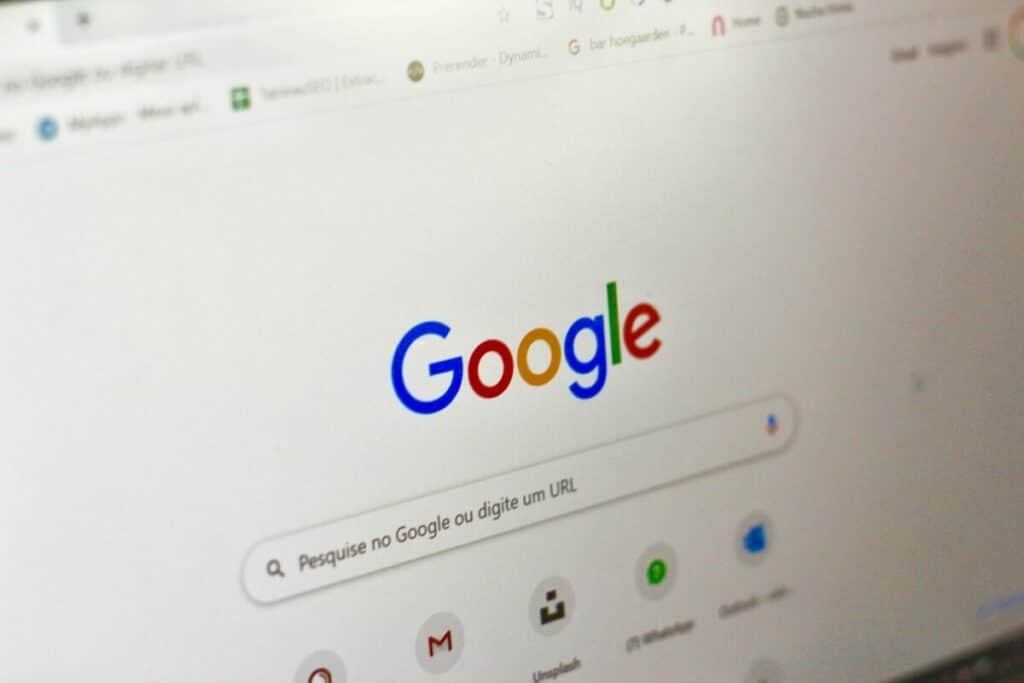Google has initiated crucial updates such as Panda and Penguin that have been designed to elevate the quality of online search results. These changes penalize low-value material like thin, duplicate, or copied content and manipulative SEO practices like link schemes and keyword stuffing.
Unexpectedly, these updates don’t just punish bad practices; they reward high-quality, authentic, and relevant content along with natural, authoritative backlinks. Be prepared for a digital landscape that values substance over scheming.
One of the major Google updates targeting poor content is the March 2024 core update, which aims to refine ranking systems to understand unhelpful webpages better, those offering a poor user experience, or those created for search engines rather than people. This update is anticipated to reduce low-quality, unoriginal content in search results significantly.
Overview of Major Google Quality and Content Updates
With every click on the search engine results page, Google tirelessly works to match users with the highest quality, most relevant content. In line with this mission, significant updates have been introduced to refine ranking systems and discern between helpful and unhelpful web pages. This improvement aims to boost the user experience by ensuring the content is valuable and genuinely serves users’ needs.
One crucial aspect of these updates is their focus on differentiating between content crafted for genuine human readers and content created solely to manipulate search engines. This distinction is pivotal in enforcing high-quality content standards, with any deviation likely to impact website rankings. Thus, it’s essential for website owners and content creators to adapt their approaches to meet the evolving requirements of Google’s algorithms.
Simply put, Google aims to declutter search results and offer users original, engaging, and relevant content. The intention behind these updates is to penalize websites with low-quality or unoriginal material and reward those that consistently produce valuable, user-centered content.
Consider a scenario where an individual searches for “best marketing strategies” on Google. The search results should ideally yield insightful, well-researched articles, guides, and reputable sources that help users understand and implement effective marketing strategies. Such an outcome is the desired result of Google’s ongoing efforts to enhance its search algorithms.
Understanding these major updates is pivotal for anyone invested in maintaining and improving their online visibility. Let’s further explore how these changes impact low-quality and unoriginal content in search results.
With a deeper understanding of these major updates, we are better equipped to analyze their impact on search results. Now, let’s delve into the specific targets of Google‘s Panda and Penguin updates.
Digging into Panda and Penguin Targets
Google’s Panda and Penguin updates have been the talk of the SEO town for quite some time now, effectively targeting low-quality content and manipulative link-building techniques.
Panda Update: Targeting Low-Quality Content
The Panda update aims at catching websites that serve up thin, duplicate, or plagiarized content. Thin content refers to pages with little substantive content and excessive advertisements, causing a poor user experience. On the other hand, duplicate or plagiarized material entails using content that already exists elsewhere – it’s frowned upon because it adds no new value or insight to what is already available on the web.
Effects of Panda Update
The implementation of the Panda update had significant ramifications for website rankings all over the world. Websites with low-quality or copied content were pushed down in search results, reducing their visibility. Despite initial resistance from webmasters who were negatively impacted, Google held firm in its commitment to raising the overall quality of content available on the web.
Penguin Update: Targeting Manipulative Link Schemes
In contrast to the Panda update, Google’s Penguin update penalized websites engaged in manipulative link schemes and keyword stuffing. Manipulative link schemes are any activity designed to artificially manipulate a site’s ranking in Google’s search results. For example, a website with numerous backlinks from unrelated sites, paid link schemes with exact match anchor text, or low-quality directories may find itself on the wrong side of the Penguin update.
The implications of this update were equally substantial, as websites that once benefited from such dubious practices plummeted in search engine rankings.
The Rewards
The silver lining is rewarding websites that consistently employ high-quality, original, and relevant content. Moreover, natural and authoritative backlinks are given precedence in search rankings.
“The key takeaway here is that these updates should serve as a reminder to focus on producing valuable, original content that resonates with your audience rather than trying to game the system.“
Understanding how these updates work is crucial for improving website rankings while maintaining integrity and authenticity.
Sites Affected by Google’s Infrastructure Upgrades
The landscape of search engine optimization is constantly shifting, and Google’s updates often have a far-reaching impact on websites. With recent infrastructure upgrades, Google addresses manipulative behaviors like scaled content creation, low-value third-party content, and site reputation abuse. But how exactly are these upgrades impacting websites?
One major change revolves around treating websites that purchase and repurpose expired domains with low-quality content. In the past, these practices allowed websites to boost their rankings and visibility despite having poor-quality content.
However, in light of Google’s updates, websites engaging in these activities are now considered as spam. This has led to a significant reduction in low-quality, unoriginal content appearing in search results, ultimately highlighting the importance of maintaining content quality to align with Google’s standards.
Imagine a situation where a website purchases an expired domain with multiple pages of low-quality content designed purely to manipulate search engine rankings. In the past, this could have led to elevated visibility for that website. However, with Google’s infrastructure upgrades, such practices are now being met with penalties and reduced visibility.
By penalizing sites that engage in these manipulative behaviors, Google aims to shift the focus toward delivering high-quality and relevant content to users. This encourages website owners and creators to prioritize valuable, original, and informative content that genuinely serves the needs of their audience.
These changes emphasize the critical nature of maintaining content quality and following ethical practices in online content creation and management. Adhering to these standards ensures compliance with Google’s guidelines and helps build trust with audiences while contributing to a healthier online ecosystem.
Now, let’s explore how websites can adapt and recover from the impact of these quality content updates.
How to Recover from Quality Content Updates

Facing penalties or drops in rankings due to quality content updates can be challenging, but there are concrete steps you can take to get back on track. Here are some essential strategies to consider when recovering from such setbacks.
Conduct a Content Audit
The first step to recovery is conducting a thorough content audit. This involves evaluating your existing content to identify and address low-quality, outdated, or duplicate material. Look for pages that may have thin, unhelpful, or keyword-stuffed content. By identifying and improving these areas, you can demonstrate your commitment to providing valuable information to users.
This stage requires careful examination of each piece of content on your website. Keep an eye out for pages that offer little value, including those with outdated information or excessive advertising, and prioritize them for improvement or removal. Remember that the goal is to enhance the overall quality of your website’s content.
Enhance User Experience
Improving user experience is critical not just for recovery but also for long-term success. Start by assessing your website’s design and layout. Is it user-friendly? Are there elements that detract from the overall experience?
Optimizing website design, enhancing page load speeds, and reducing intrusive elements like pop-up ads can significantly improve user experience. Ensure that your website is accessible and navigable across various devices, providing a seamless experience for visitors.
Build Quality Backlinks
In addition to internal improvements, building quality backlinks is a fundamental aspect of recovery. Focus on acquiring natural and relevant backlinks from authoritative sources to improve your website’s credibility. Engage in ethical link-building practices by networking with reputable websites and creating valuable content that naturally attracts organic backlinks.
Create Fresh, Original Content
Finally, regularly creating and publishing fresh, original content is essential for rebuilding trust with search engines and users. Prioritize content creation that provides value to users and aligns with their search intent. This could involve addressing trending topics within your niche, offering comprehensive guides, or sharing insightful analysis relevant to your audience.
Remember that consistently producing high-quality, original content demonstrates your dedication to delivering valuable information to your audience. This approach not only aids in recovery but also contributes to sustainable growth over time.
Each of these steps plays a significant role in mitigating the impact of quality content updates and fosters a proactive approach towards enhancing the overall quality and relevance of your website’s content. As we navigate the terrain of recovering from quality content updates, we must delve into backlink practices and their influence on Google’s penalty systems.
Role of Backlink Practices in Google’s Penalty Systems

When it comes to your website’s performance and visibility in search results, backlinks—a link from someone else’s website to yours—are a big deal. They can give your site more authority and credibility, which is great for your rankings. However not all backlinks are created equal. Google uses backlinks as a signal to determine a website’s quality and relevance. Unnatural, low-quality, or irrelevant backlinks can lead to penalties, affecting a website’s rankings.
Think of backlinks like recommendations. If reputable and trustworthy people recommend a restaurant, you’re more likely to trust it, right? That’s how Google sees it, too. If other trusted and relevant websites link back to yours, it tells Google your content is valuable and worth sharing.
So, how do you acquire high-quality backlinks? Having a great user experience on your website that people want to engage with is one way—a blog with helpful tips, for example, can attract natural backlinks from other bloggers. Creating genuinely helpful, interesting content will naturally attract backlinks from others who find value in what you have to say.
Let’s say you have a blog about DIY home improvement. If you write an amazing guide on building a backyard deck and share it on your social media channels, other home improvement enthusiasts might discover it and link to it from their blogs or websites.
Google values the context of the linking page as well. It looks at how relevant the linking page’s topic is to the linked-to page. For instance, a link from a popular home improvement forum to your DIY home improvement blog carries more weight than a link from an unrelated source.
You might be wondering what unnatural backlinks are. These links have been obtained through manipulative practices rather than organically because of the value of the content. This includes buying links, participating in link schemes, or adding irrelevant links just to increase traffic.
Some argue that link-building tactics should be approached cautiously but disagree with the strictness of Google’s penalties for certain link-building strategies. While it’s important to maintain quality over quantity when obtaining backlinks, some find fault with Google’s opposing approach toward paid advertising and paid links.
However, it’s essential to focus on acquiring high-quality, natural backlinks from reputable sources to improve credibility and authority while avoiding manipulative link-building practices. Violating these practices can lead to penalties, including drops in search rankings or even removal from search results altogether. Understanding the role of backlink practices in Google’s penalty systems is fundamental for maintaining credibility and visibility in search results.
Navigating the ever-changing landscape of SEO amidst major algorithmic updates requires finesse and adaptability. Now, let’s explore how web content can continue to strive for excellence in the wake of these monumental shifts.
Striving for Content Excellence after Google Updates

Google’s recent updates have underscored the importance of high-quality content. So, what does content excellence mean in this context? It means aligning your content with what users seek and providing valuable, informative, and engaging material that meets their needs.
After Google updates, let’s break down the key components of striving for content excellence.
Conducting Thorough Keyword Research
To create content that captures the attention of searchers, you need to know what they’re looking for. Keyword research helps identify the words and phrases people use when they search online. By integrating these relevant keywords into your content, you can increase its visibility and ensure it aligns with user search queries.
For instance, if you’re writing about fireplace maintenance, thorough keyword research ensures that you’re incorporating terms like “fireplace cleaning,” “chimney inspection,” or “wood stove maintenance” to match user search intent effectively. This way, your content becomes more discoverable and helpful to people seeking information on fireplace care.
Providing Comprehensive Answers
The days of surface-level content are gone. Comprehensive answers to user queries are now the standard. Users want detailed information that addresses their initial question and provides additional valuable insights. This means going beyond basic explanations and diving deep into topics to offer users a complete understanding of the subject matter.
By delivering in-depth, well-researched content, you can establish yourself as a reliable source of information in your niche and build trust with your audience.
Incorporating Multimedia Elements
Text-only content is no longer sufficient. Incorporating multimedia elements such as images, videos, and infographics adds depth and richness to your content. Visual aids improve user engagement, enhance understanding, and make the reading experience more enjoyable.
When discussing fireplace maintenance, imagine how impactful it would be to include step-by-step videos on chimney sweeping techniques or infographics detailing different fireplace parts and their functions. Not only does this enrich the content, but it also elevates user experience.
See Related: How to Create Helpful Content
Staying Informed About Updates

Knowledge is power, especially in the ever-evolving landscape of digital marketing. Staying informed about updates to Google’s guidelines and algorithm changes is crucial to adapting your content strategy effectively.
This includes seeking professional guidance from reputable sources to gain reliable insights into best practices and ensuring continual alignment with quality content standards. Remaining abreast of industry trends enables you to make informed decisions and implement strategies that keep your content at the forefront of current requirements.
In this era where content reigns supreme in determining online success, adapting to evolving standards is paramount. By incorporating these principles into your content strategy, you can navigate Google’s updates adeptly and emerge as a purveyor of topnotch content.

